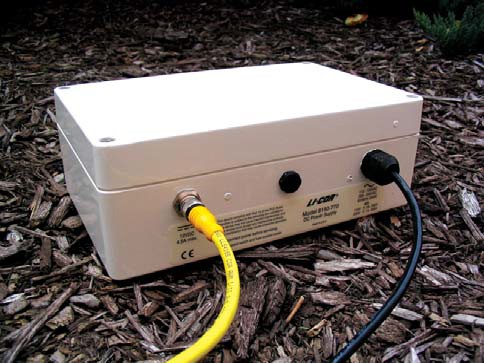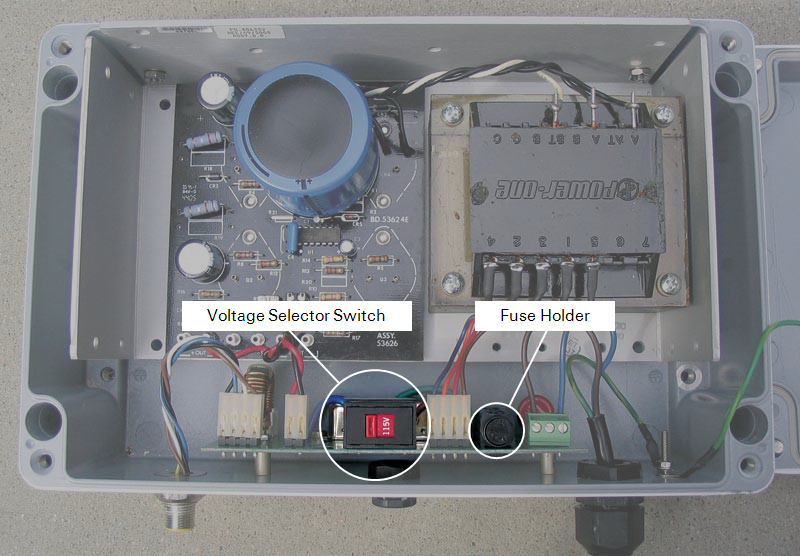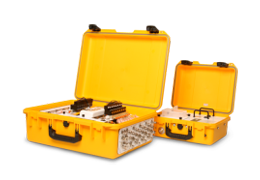The AC-to-DC power supply can be used with 115-120 or 230-240 VAC main power.
WARNING: To protect against electrical shock, the power supply must be connected to a grounded AC receptacle. We recommend that the mains power to the instrument be supplied by a ground-fault circuit interrupter (GFCI). If an extension cord is to be used with the power supply, make sure that it is rated for outdoor use.

Setting the input voltage
Loosen the 4 screws in each corner on the top panel of the power supply. Slide the top cover away from the supply; note that the cover is attached via a grounding wire and cannot be fully removed. Verify that the switch is in the correct position for your power supply voltage (choose 115 for 115-120 VAC, or 230 for 230-240 VAC).
If you move the voltage switch, you will need to change the fuse as well. Remove the cap on the fuse holder and check to see that the proper fuse is installed. Spare fuses are in the 8150-770 spares kit.

- A 1 A fuse (part number 439-08924) is used when the voltage selector switch is in the 230 VAC position.
- A 2 A fuse (part number 439-08923) is used when the voltage selector switch is in the 115 VAC position.
The AC to DC power supply includes a 2 m power cord that connects the power supply to the LI-8150 Multiplexer (part number 9981-140). Connect the power cord between the power supply and multiplexer before plugging the power supply into a power outlet.
Tips for using the power supply in outdoor conditions
The AC to DC power supply can rest on the ground or on a platform. If it is allowed to rest on the ground, and there is a possibility of water pooling around or immersing the unit, we recommend placing the power supply on a platform or in a shelter to reduce the possibility of shock hazard. Also be sure that the power supply cord will always be accessible, as this is the only way to completely remove power from the instrument.
If the power supply is deployed outdoors for an extended period of time, it may be subject to damage from weather and rodents. We recommend that you periodically inspect the power supply and power cords for damage. In addition, check the gland connector where the power cord passes through the power supply case to make sure it is tight, so that water cannot leak into the case; tighten if necessary.
The power supply can be used in combination with the batteries inside the analyzer control unit. If AC power is interrupted, the batteries will continue to power the LI-8100A, but the system will collect bad data.
